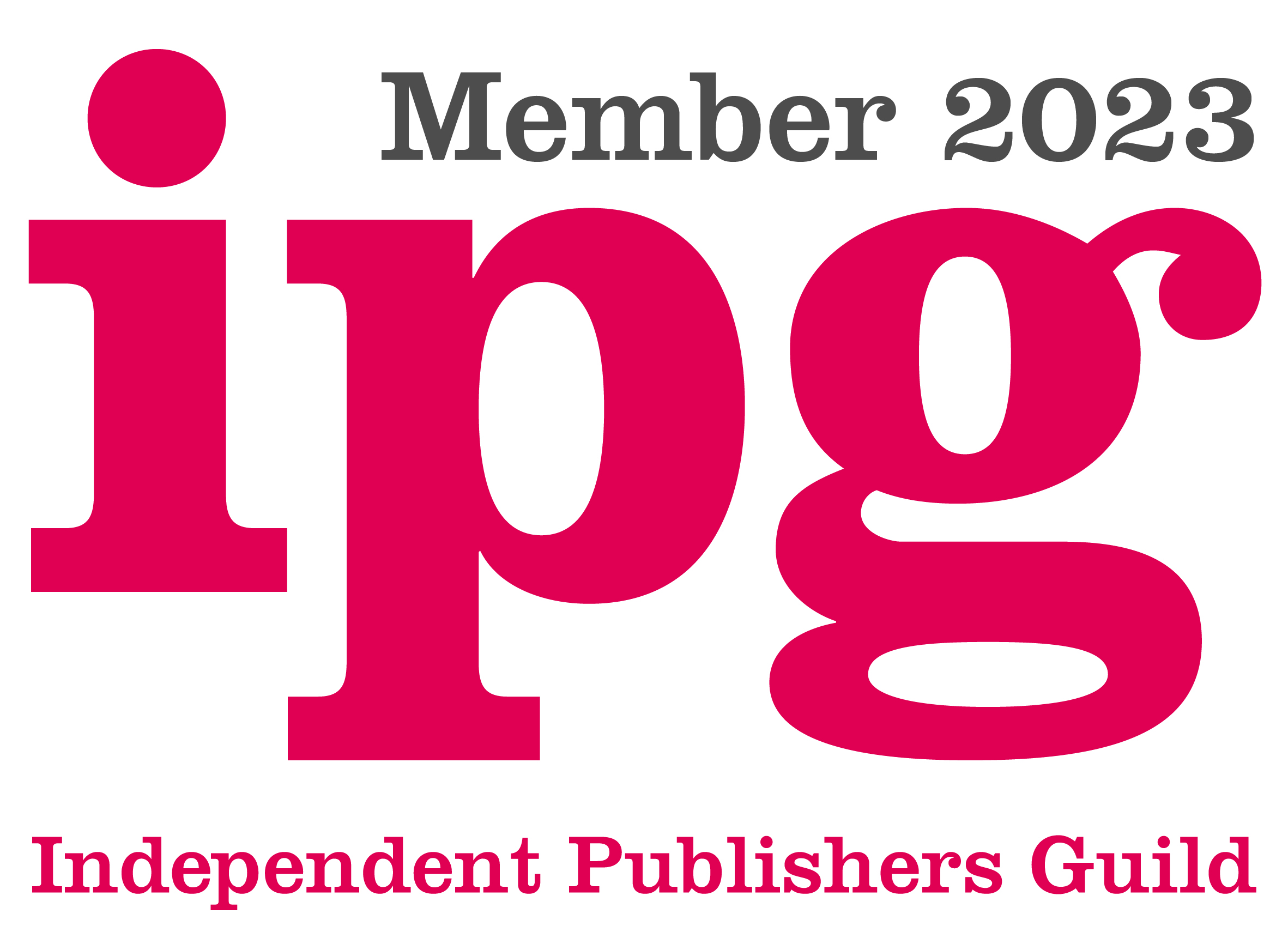Guides
Page owner: Information director
Our guides provide a basic introduction to the various skills and knowledge needed to work as an editorial professional. They are intended for copyeditors and proofreaders, both practising and potential, and will also prove useful to others involved in publishing content, including businesses, organisations, agencies, students and authors. The guides are written by experienced editors, who are usually members of the CIEP. Publications in the series focus on the core skills of copyediting and proofreading, related areas such as project management, and practical advice on setting up and running an editorial business or working in-house. The guides provide only a taster of the skills and knowledge needed. We encourage you, once you have read a guide, to undertake relevant training with the CIEP, or another reputable provider such as the Publishing Training Centre (PTC), which will cover these subjects in much greater depth.
Some guides are currently only available as downloadable PDFs. We’re working to get those available via our print-on-demand platform and within our new pricing structure – watch this space!
Are you a CIEP member?
Members get free digital versions of all of our guides included in your membership fee. Log in then use the member download buttons below.
- Developmental Editing for Fiction
- Developmental Editing for Non-Fiction
- Editing Fiction Containing Gender-Neutral Pronouns
- Editing for Communications Professionals
- Editing into Plain English
- Editing Scientific and Medical Research Articles
- Editing Textbooks
- Editorial Project Management
- Getting Started in Fiction Editing
- Going Solo
- How to Edit Cookery Books
- How to Work with Self-Publishers
- Marketing Yourself
- Pricing a Project
- Proofreading Theses and Dissertations
- Punctuation
- Your House Style
The guides are well written with common sense and offer invaluable advice.
Annie Deakins, proofreader
Developmental Editing for Fiction
Sophie Playle
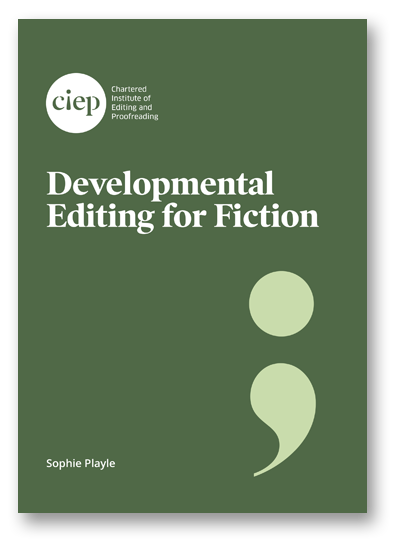
Developmental Editing for Fiction is for you if you want to find out more about the knowledge, skills and tasks required to developmental edit fiction. It provides:
- what you need to know in order to offer developmental editing as a service
- an overview of the different methods of developmental editing
- ideas on how to get started
- a comprehensive list of resources.
It also covers different practical approaches to providing feedback on a manuscript so that you can help an author redraft their book to better reach its potential.
Buy hard copy (£8.99) Buy PDF (£6.00) Buy ePub (£6.00) Member download
Developmental Editing for Non-Fiction
Claire Beveridge
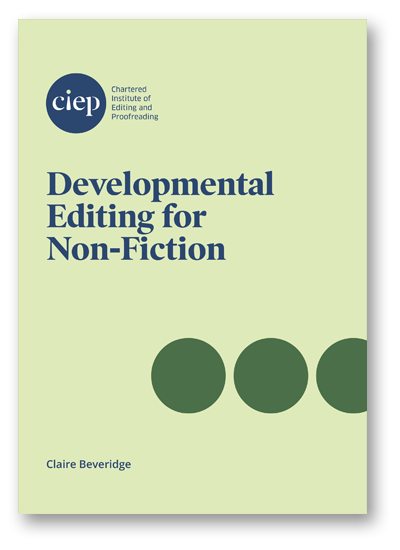
If you want to learn more about developmental editing of non-fiction resources, this guide is for you. It looks at the skills you need and describes practical approaches you can use, whether you are employed by a publisher or working on a freelance basis.
The main purpose of developmental editing is to help the author clarify their message and deliver it to the intended audience effectively. This guide introduces the key things you need to consider along the way.
Buy hard copy (£8.99) Buy PDF (£6.00) Buy ePub (£6.00) Member download
Editing Fiction Containing Gender-Neutral Pronouns
Louise Harnby
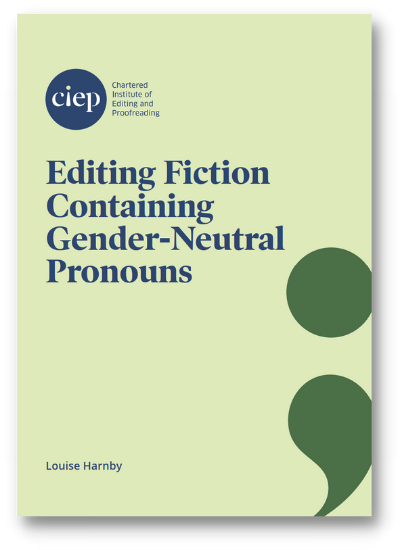
Every person has the right to choose the pronouns that align with their own sense of self. This has implications for fiction editors. Basing its examples on real works of fiction, the guide offers a wealth of options for working with gender-neutral pronouns.
The guide includes:
- traditional and conscious-language approaches to pronouns
- different narrative viewpoint styles and why they matter
- how single- and multiple-pronoun universes work
- acknowledging gender identity without pronouns
- a comprehensive list of third-person gender-neutral pronouns
- how much explanation writers should give about the pronouns they've used.
Buy hard copy (£8.99) Buy PDF (£6.00) Buy ePub (£6.00) Member download
Editing for Communications Professionals
Cathy Tingle
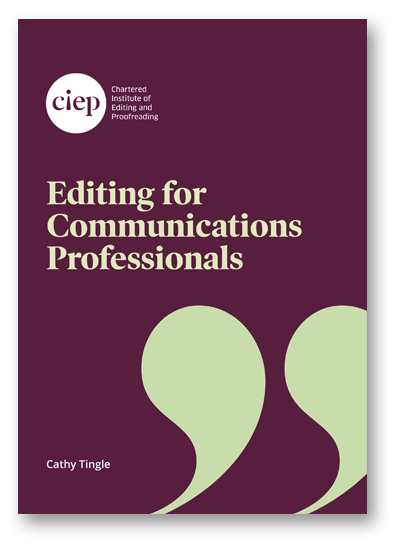
If you work with text within a business or another type of organisation, then Editing for Communications Professionals is for you. The content you publish will represent the organisation you work for, so it’s crucial to get it right.
This guide is designed to help you approach your text like a professional editor. There is a world of established editorial practice out there, and learning more about it will help you improve your communications.
Buy hard copy (£11.99) Buy PDF (£8.00) Buy ePub (£8.00) Member download
Editing into Plain English
Luke Finley, Laura Ripper and Sarah Carr
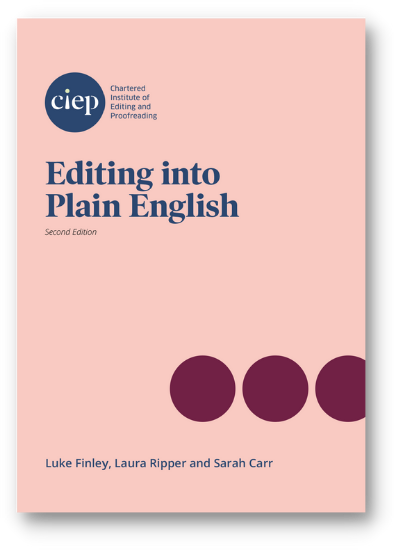
With increasing demands for clearer communication in the public and private sectors, plain-English editing has much to offer. Looking at key aspects of working as a freelance editor for this market, this guide will:
- introduce the concept of plain English and techniques for plain-English editing
- help you to identify the market for plain-English skills
- help you to find work in this field.
Editing Scientific and Medical Research Articles
Dr Claire Bacon
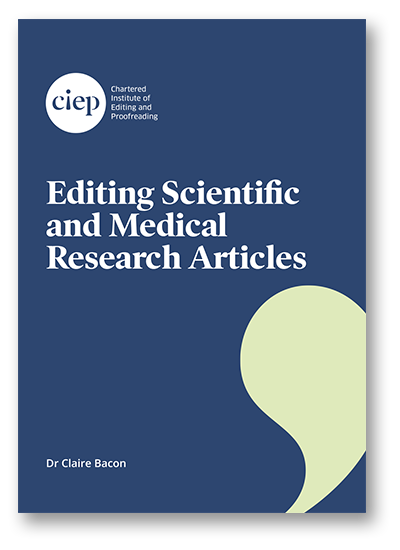
Scientific research articles present complicated results and ideas. However, it is often the writing rather than the science that makes these articles difficult to read. Language editors can help scientists communicate their important findings clearly and effectively.
This guide tells the editor all they need to know to help scientists navigate the publication process and get their research papers ready for publication. It explains how a research article should be structured and gives a step-by-step guide to editing each section, including tables and figures. The elements of scientific style are also explained together with common problems the editor may encounter and how to solve them.
Buy hard copy (£11.99) Buy PDF (£8.00) Buy ePub (£8.00) Member download
Editing Textbooks
Hetty Marx
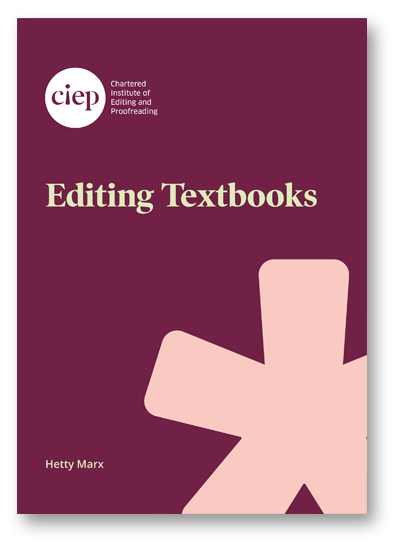
If you want to learn more about editing textbooks and other educational resources, this guide is for you. It covers:
- typical workflows and working practices involved in editing textbooks
- key questions to consider when development editing textbooks
- the main tasks and checks to complete when copyediting textbooks
- advice on how to work well with publishers, packagers and authors.
This practical guide will provide you with a clear understanding of how educational publishing works and help increase your confidence when editing educational resources.
Buy hard copy (£11.99) Buy PDF (£8.00) Buy ePub (£8.00) Member download
Editorial Project Management
Abi Saffrey with Emily Kopieczek
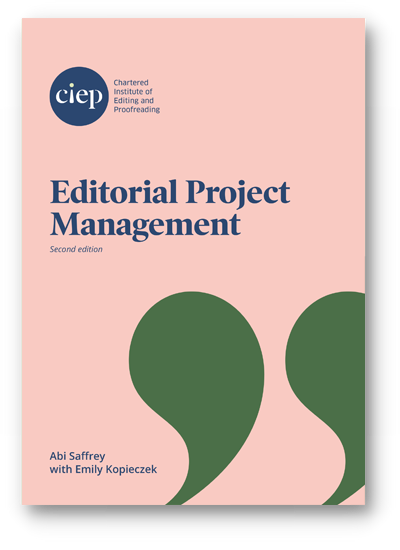
REVISED SECOND EDITION (2024) including a new chapter on working with project management companies and packagers. Editorial project managers make publications happen, taking raw content through quality control and design processes to produce a finished product.
Editorial Project Management outlines the key concepts of editorial project management, including briefing, scheduling and budgeting. It highlights the importance of communication, and other soft skills, in guiding a project through its production while meeting stakeholders’ requirements and getting the best out of suppliers.
This guide is for you if:
- you want to know what editorial project management is
- you are thinking about adding editorial project management to your skillset
- you are considering taking on editorial project management responsibilities.
Getting Started in Fiction Editing
Katherine Trail with Rachel Rowlands
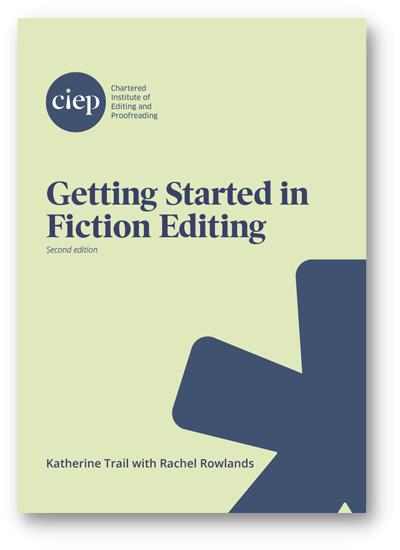
REVISED SECOND EDITION (2024). Fiction editing is an increasingly popular field, but one that can be daunting to a new editor or even an experienced editor who has only ever worked on non-fiction. This guide is aimed at copyeditors, whatever their experience, who want to know more about the nuts and bolts of fiction editing. It will also be useful to those who proofread fiction, to help understand what the editor should have considered.
Getting Started in Fiction Editing explains how to work with both publishers and independent authors and examines how their needs might differ. It also explores the various types of editing that a fiction manuscript might need, as well as what editors need to be aware of, such as continuity, the importance of style sheets and the risks of over-correction.
The guide concludes with a list of resources for further reading and a glossary of fiction terms.
Going Solo: Creating your freelance editorial business
Sue Littleford
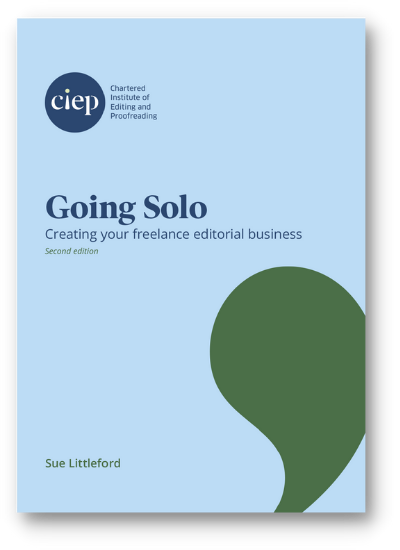
FULLY REVISED SECOND EDITION including information on new developments such as IR35 and Making Tax Digital and many new and updated links to useful resources. CIEP members also have access to the Going Solo Toolkit, including a suite of spreadsheet tools to keep track of business records.
Making the decision to go solo as a freelance proofreader or copyeditor is a big career step. This guide covers:
- business basics – writing a business plan and thinking about all the elements of your new business, from branding and marketing to targeting clients
- knowledge – what you need to know about training and best editorial practice, and where to find out more
- clients – where to find them, how to work with them
- record-keeping – statutory requirements for income tax and national insurance, and recording experience to upgrade CIEP membership
- money – tracking your finances, accounting, budgeting and invoicing
- you – looking after yourself, managing your time and preparing for disaster recovery
- resources – a wide range of resources for running a freelance editorial business
Note: Minor revisions were made in October 2023 to reflect HMRC changes regarding tax years.
Readers are guided through the decisions a business owner has to make, the things they should be aware of and sources of support.
Buy hard copy (£14.99) Buy PDF (£10.00) Buy ePub (£10.00)Member download
The second edition of Sue Littleford’s guide has 90 pages filled with more information than you can shake a stick at. It’s clear, concise, easy to navigate and has a wealth of information, from office basics to marketing and branding, navigating social media and working with clients. Training, budgeting and keeping records are covered comprehensively along with tips on how to look after yourself – after all, the survival of your business rests on your health and welfare.
Anne Gillion, CIEP Professional Member
How to Edit Cookery Books: Recipes, ingredients, measurements and methods
Wendy Hobson
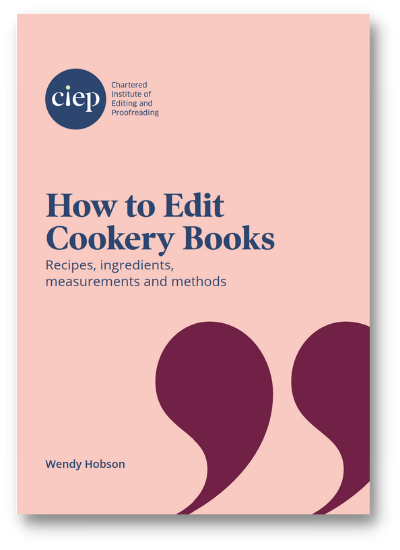
Editing recipes demands all the usual skills of a copyeditor or proofreader. But there are also conventions in good cookery and recipe writing that can mean the difference between success and failure in the kitchen. This guide explains the essentials of successful cookery editing, including:
- pitching it right – making sure the text is targeted to the skill level and knowledge of its intended readers
- dealing with ingredients – bringing clarity and consistent presentation
- making sense of the method – applying conventions to help the reader understand quickly what to do
- adapting for an international audience – so the recipes can be understood by cooks wherever they are in the world.
This guide is designed to help you edit cookery texts, giving you a sound foundation in the specific needs of this popular niche market. Benefit from the distillation of over 40 years of experience working on cookery books to help you learn to prepare text to the standards expected in cookery publishing.
Buy hard copy (£14.99) Buy PDF (£10.00) Buy ePub (£10.00) Member download
This guide has not left my desk since I got it and I dip into it almost daily. It is beautifully methodical in its approach and peppered with useful tips and examples. A guide to savour!
Sarah Prior, CIEP Intermediate Member
How to Work with Self-Publishers: Editing, proofreading and other considerations
Alison Shakspeare
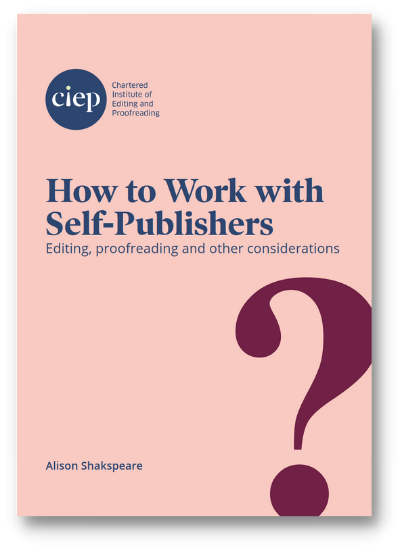
A boom in book self-publishing has increased work for editors and opened a host of opportunities for them to develop services, with their range of skills and technical abilities, that self-publishers will want to pay for. This guide offers an overview of self-publishing and also drills down into more technical details for those who want to be aware of the issues self-publishers will face on the road to producing a professional book.
This guide is for you if you want to develop your support of self-publishing authors, in fiction or non-fiction. There are many aspects of the process that, as a practising editor, you may never need, or want, to deal with, but knowing how they work will help you assess a client’s assumptions, answer their questions and be of service in guiding them towards a professional self-publication.
Buy hard copy (£11.99) Buy PDF (£8.00) Buy ePub (£8.00) Member download
Marketing Yourself: Strategies to promote your editorial business
Erin Brenner and Sara Hulse
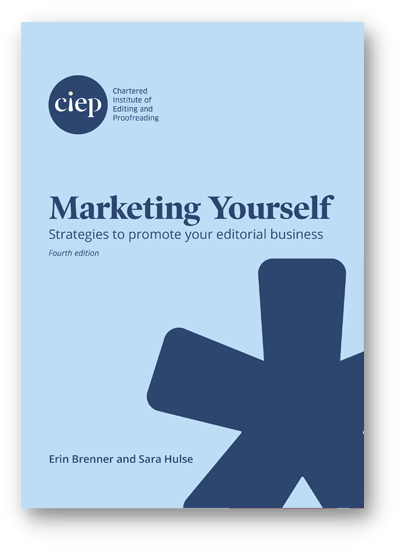
REVISED FOURTH EDITION (2023). If you're a self-employed editorial professional then you have to care about marketing if you want your business to thrive (or even just survive). This guide will help you to create a marketing plan that's tailored to your unique goals and circumstances. It covers:
- why marketing is important, even if you currently have enough clients
- how to identify and target your ideal clients
- what marketing methods to use, including websites, directories, social media, cold calling and more.
This guide includes valuable advice for those who are just starting out as well as for those who are more experienced. It will inspire and encourage you to get out there and promote yourself and your editorial business.
Buy hard copy (£8.99) Buy PDF (£6.00) Buy ePub (£6.00) Member download
Pricing a Project: How to prepare a professional quotation
Melanie Thompson
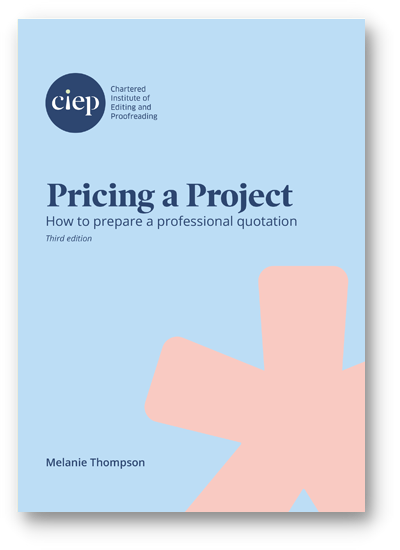
REVISED THIRD EDITION (2023). Proofreading and copyediting are professional services and no two projects are the same. Pricing editorial work is not like selling widgets at ‘tuppence a bag’, and it can be difficult for editorial professionals to know how to tailor quotations to meet their clients’ needs. Pricing up a project involves four main elements:
- understanding what the particular job involves
- knowing your own pace of work
- knowing what can go wrong
- knowing the market rate for the work.
Pricing a Project describes the quotation process, from taking a brief to agreeing terms and conditions. Its advice is applicable to all types of editorial work – from simple proofreading, through copyediting and substantive editing of books, journals and other materials, to estimating the workload involved in website editing and tendering for complex contracts. It comprises tips, checklists and worked examples, plus other sources of information and guidance.
Buy hard copy (£8.99) Buy PDF (£6.00) Buy ePub (£6.00) Member download
When I was first starting out I purchased the SfEP guide to Pricing a Project. It was so packed full of information and advice that it gave me the confidence I needed when handling those first few quotes.
Sarah Dronfield, proofreader
Proofreading Theses and Dissertations
Stephen Cashmore
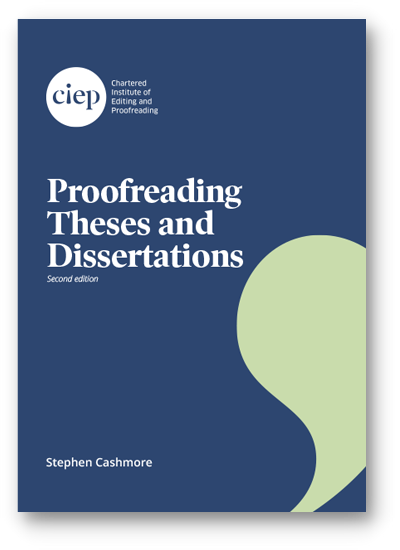
REVISED SECOND EDITION (2023). Includes a new section on the use of AI. Proofreading Theses and Dissertations introduces some of the basic principles of proofreading academic texts. In many respects, the work required is the same as for any other proofread – you check for errors in spelling, punctuation, grammar and consistency – but it is complicated by the fact that the thesis or dissertation must be the student's own work.
The guide explores the nature of this type of proofreading as well as the practicalities of how to get work, calculating fees and negotiating with students. It then deals with potentially thorny ethical issues such as what to do with possible plagiarism and how much to query, how you should approach the use of AI, and how much to query, intervene in or change the student’s writing.
Buy hard copy (£8.99) Buy PDF (£6.00) Buy ePub (£6.00) Member download
Punctuation: A guide for editors and proofreaders
Gerard M-F Hill
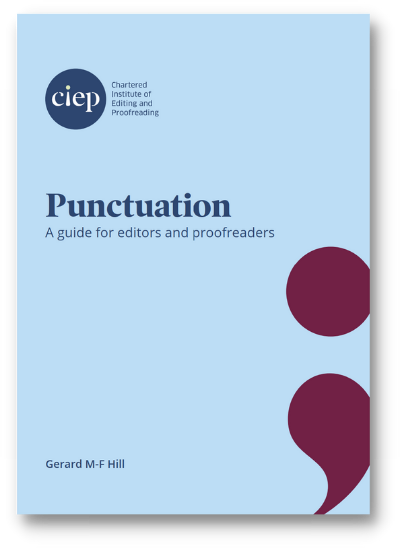
Punctuation is an aspect of language where editors and proofreaders are constantly taking decisions, no matter what type of document they’re working on. But how do they decide? This guide offers a reason-based approach to punctuation and its uses, to help achieve maximum clarity and consistency for the reader, including:
- what punctuation is, what it does and why we need it
- how the main punctuation marks are used in British English
- some lesser-known marks and notes on US punctuation
- an informed, long-term perspective on how punctuation has changed, is changing and will go on changing
- useful resources to take you forward in your learning
- a handy glossary covering language-, grammar- and punctuation-based words and terms.
Over 100 real-life examples help to build your understanding. Snippets of punctuation history and trivia keep things fun. Whether you need help with hyphens or confidence with commas, or want to find out what curly braces do, you’ll find a wealth of knowledge and insight into punctuation here, and some ideas you may never even have considered before.
Buy hard copy (£14.99) Buy PDF (£10.00) Buy ePub (£10.00) Member download
Your House Style: Styling your words for maximum impact
Christina Thomas with Abi Saffrey
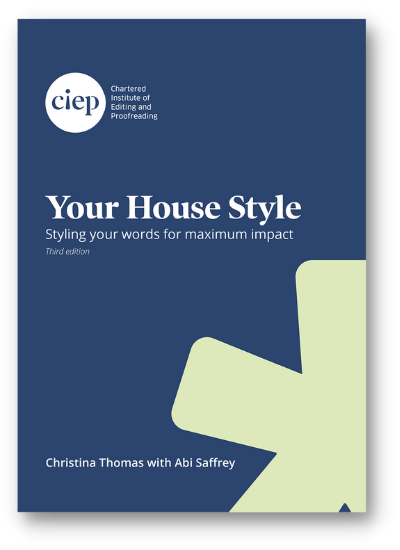
A badly presented document, publication or website loses credibility quickly when the reader is distracted by inconsistent spelling and usage and badly presented figures and measurements. The cure? A well-thought-out editorial house style to guide everyone who works on a document, publication or website. This guide outlines the value of a house style and reveals how to go about constructing such guidance if one doesn't already exist. It will alert you to the many ways in which content, whether printed or online, can disappoint, simply through inconsistent usage or presentation. Working through this will help you identify weaknesses in written content and enable you to devise a style guide that can be used by everyone concerned to iron them out. It's also an indispensable quick guide for editors and proofreaders who need to apply or devise house style.
